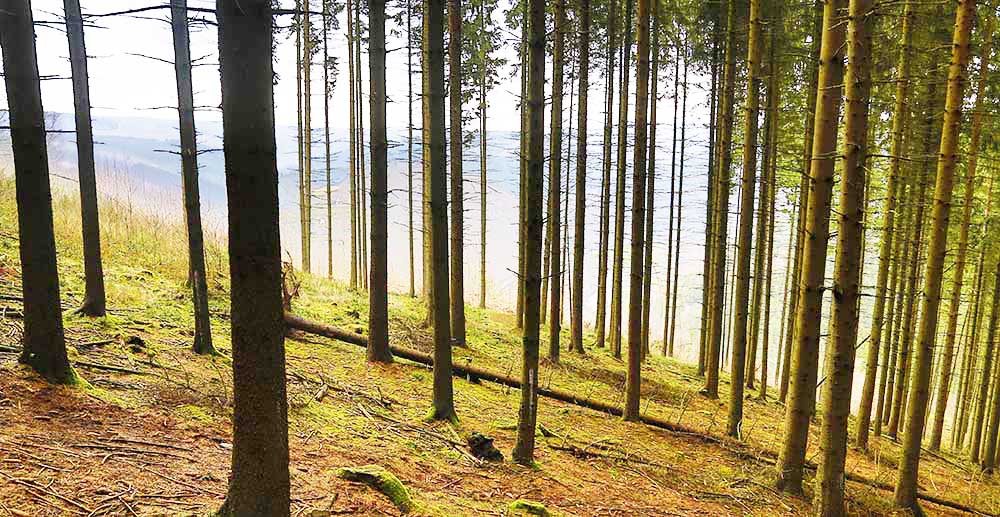Analysis of Forest Residues

Background
Wood with a smaller diameter than 70 mm (branches and the tops of trees) is generally not harvested in roundwood operations and is left on the forest floor.Forest residues represent a highly heterogeneous mix of biomass. In addition to the tree-tops and branches there will also be a significant amount of foliage.
The constitution and total quantity of forest residues on any particular site is dependent on: the age of the tree; the species; the tree-spacings; and the wood assortment harvested. Depending on these, the amount of forest residues can vary from 50 to 100 oven dry tonnes per hectare.
The biomass obtained after thinning operations is also of relevance. Due to their small size, these trees, particularly first thinnings, are often not used in sawmills or for pulpwood.
Analysis of Forest Residues at Celignis
Celignis Analytical can determine the following properties of Forest Residues samples:
Sugars (Monosaccharides)
Sugar Alcohols and Uronic Acids
Lignin and Extractives
- Lignin (Klason)
- Lignin (Klason - Protein Corrected)
- Lignin (Acid Soluble)
- Acid Insoluble Residue
- Extractives (Ethanol-Soluble)
- Extractives (Water-Soluble)
- Extractives (Exhaustive - Water then Ethanol)
- Lignin S/G Ratio
- Extractives (Water-Insoluble, Ethanol Soluble)
- Protein Content of Acid Insoluble Residue
- Carbon Content of Acid Insoluble Residue
- Hydrogen Content of Acid Insoluble Residue
- Nitrogen Content of Acid Insoluble Residue
- Sulphur Content of Acid Insoluble Residue
Amino
Acids
Thermal Properties
- Moisture
- Ash
- Ash (Acid Insoluble)
- Carbon
- Hydrogen
- Nitrogen
- Sulphur
- Oxygen
- Volatile Matter
- Fixed Carbon
- Gross Calorific Value
- Net Calorific Value
- Chlorine
- Ash Shrinkage Starting Temperature (Oxidising)
- Ash Deformation Temperature (Oxidising)
- Ash Hemisphere Temperature (Oxidising)
- Ash Flow Temperature (Oxidising)
- Ash Shrinkage Starting Temperature (Reducing)
- Ash Deformation Temperature (Reducing)
- Ash Hemisphere Temperature (Reducing)
- Ash Flow Temperature (Reducing)
- Thernogram - Under Nitrogen
- Thermogram - Under Air
Major and Minor Elements
Cellulose Content of Forest Residues
The composition of forestry residues will depend on: the tree species; the time of year; and the method used for collecting the residues, among other factors.Given that foliage and bark typically contain lower cellulose contents than wood, a greater mass proportion of stem wood will favour an increased cellulose content in the harvested residues.
Click here to see the Celignis Analysis Packages that determine cellulose content.
Hemicellulose Content of Forest Residues
As with cellulose, the hemicellulose content of forestry residues will depend on the mass proportions that the different tree fractions (leaves, bark, tops, branches, stem wood) contribute to the total mass of harvested residues.Click here to see the Celignis Analysis Packages that determine hemicellulose content.
Lignin Content of Forest Residues
Increased proportions of bark and stem wood in the harvested residues will favour an increased lignin content.Click here to see the Celignis Analysis Packages that determine lignin content.
Starch Content of Forest Residues
Starch can be an important constituent of forest residues as it tends to be in higher concentrations in the foliage and bark fractions of trees.Click here to see the Celignis Analysis Packages that determine starch content.
Uronic Acid Content of Forest Residues
The uronic acid content and composition of forestry residues will depend on the mass proportions that the different tree fractions contribute to the total mass of harvested residues. For instance, bark tends to have the highest uronic acid content, followed by leaves, with lower amounts in the stem wood.Click here to read more about uronic acids and to see the Celignis Analysis Packages that determine uronic acid content.
Enzymatic Hydrolysis of Forest Residues
We can undertake tests involving the enzymatic hydrolysis of Forest Residues. In these experiments we can either use a commercial enzyme mix or you can supply your own enzymes.We also offer analysis packages that compare the enzymatic hydrolysis of a pre-treated sample with that of the native original material.
Click here to read more about enzymatic hydrolysis and to see the various analysis packages that we offer.
Ash Content of Forest Residues
While most wood has a relatively low ash content, foliage can contain a significant amount of ash. Hence, a greater mass proportion of foliage in the harvested residues will lead to an increased ash content in the sample.Click here to see the Celignis Analysis Packages that determine ash content.
Heating (Calorific) Value of Forest Residues
The heating value of forestry residues will depend on the mass proportions that the different tree fractions (leaves, bark, tops, branches, stem wood) contribute to the total mass of harvested residues.Click here to see the Celignis Analysis Packages that determine heating value.
Bulk Density of Forest Residues
At Celignis we can determine the bulk density of biomass samples, including Forest Residues, according to ISO standard 17828 (2015). This method requires the biomass to be in an appropriate form (chips or powder) for density determination.Click here to see the Celignis Analysis Packages that determine bulk density.
Basic Density of Forest Residues
At Celignis we can determine the basic density of some suitable biomass samples. The method requires the biomass to be in an appropriate form (chips) for density determination.Click here to see the Celignis Analysis Packages that determine basic density.
| Previous Feedstock | Next Feedstock |
Go Back to List of Feedstocks.
Energy
Crops
Agricultural Residues and Wastes
Industrial Residues and Wastes
Municipal
Wastes
Biorefinery
Products






